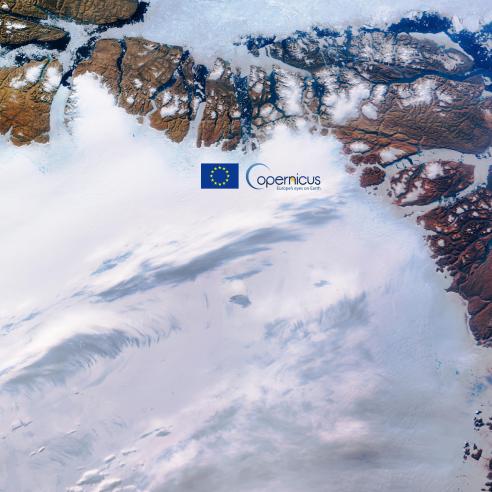14 October 2022
17 July 2020
Its primary mission is high-precision ocean altimetry, providing information about sea surface topography including sea level and significant wave height.
Its secondary mission is radio occultation, an essential input for climate monitoring and weather forecasting.
There will be two Sentinel-6 satellites - Sentinel-6B will launch in 2025 - and between them, they will provide the most accurate source of observations of sea surface height, mean sea level and ocean circulation, until at least 2030.
Copernicus Sentinel-6 (Copyright ESA 2015, Airbus Defence and Space)
Who is involved?
The partners involved in the Sentinel-6 mission are the European Commission, EUMETSAT, the European Space Agency, NASA and the US National Oceanic and Atmospheric Administration (NOAA) with the support of the French Space Agency (CNES).
Why is Copernicus Sentinel-6 important
The Copernicus Sentinel-6 mission will extend the unique record of mean sea level rise that began in 1992 with the TOPEX/Poseidon mission (1992-2006) and continued with the Jason (2001-2013), Jason-2 (2008) and Jason-3 (2016) satellites.
Copernicus Sentinel-6A will take over from Jason-3 as the reference altimetry mission. This means its measurements will be those against which other satellite altimetry data are cross-calibrated, to ensure accuracy.

Reliable, highly accurate mean sea level measurements will be crucial in the context of the implementation of the Paris Agreement, to improve our knowledge and understanding of the role of the ocean in climate change and for mitigation and adaptation policies in coastal areas.
In addition to climate change monitoring, Copernicus Sentinel-6 mission data will be crucial inputs for applications including operational oceanography and weather forecasting.
Copernicus Sentinel-6 sea surface height data will be essential for short range forecasting of high impact weather, such as tropical cyclones, and for medium, long-range and seasonal forecasts.
Applications in the area of operational oceanography include ship routing, support for offshore and other marine industries, fisheries, and responses to environmental hazards.
Sentinel-6 will also be an important contributor to the core operational ocean information services delivered in Europe by the Copernicus Marine Environment Monitoring Service (CMEMS).
Facts & Figures
- Dimensions: 5.13m x 4.17m x 2.34m (in-orbit configuration)
- Payload: six instruments
- Mass: 1,440kg (including fuel)
- Power: 891W (average consumption)
- Design lifetime: 5.5 years
- Orbit: non-sun-synchronous orbit, 1,336km altitude, 66° inclination
- Repeat cycle: 10 days

* In January 2020, the Sentinel-6/Jason-CS A satellite was renamed the Sentinel-6 “Michael Freilich” in honour of the former Director of NASA’s Earth Science Division.











